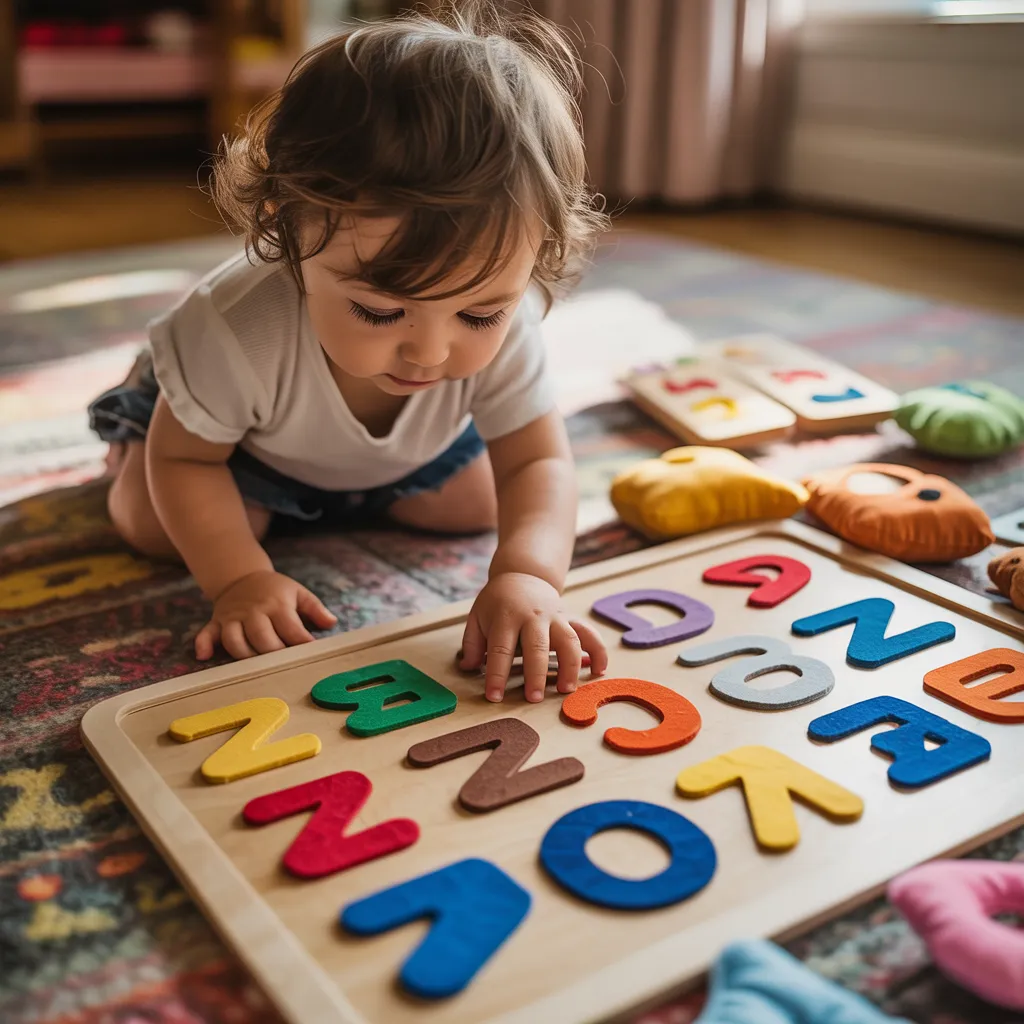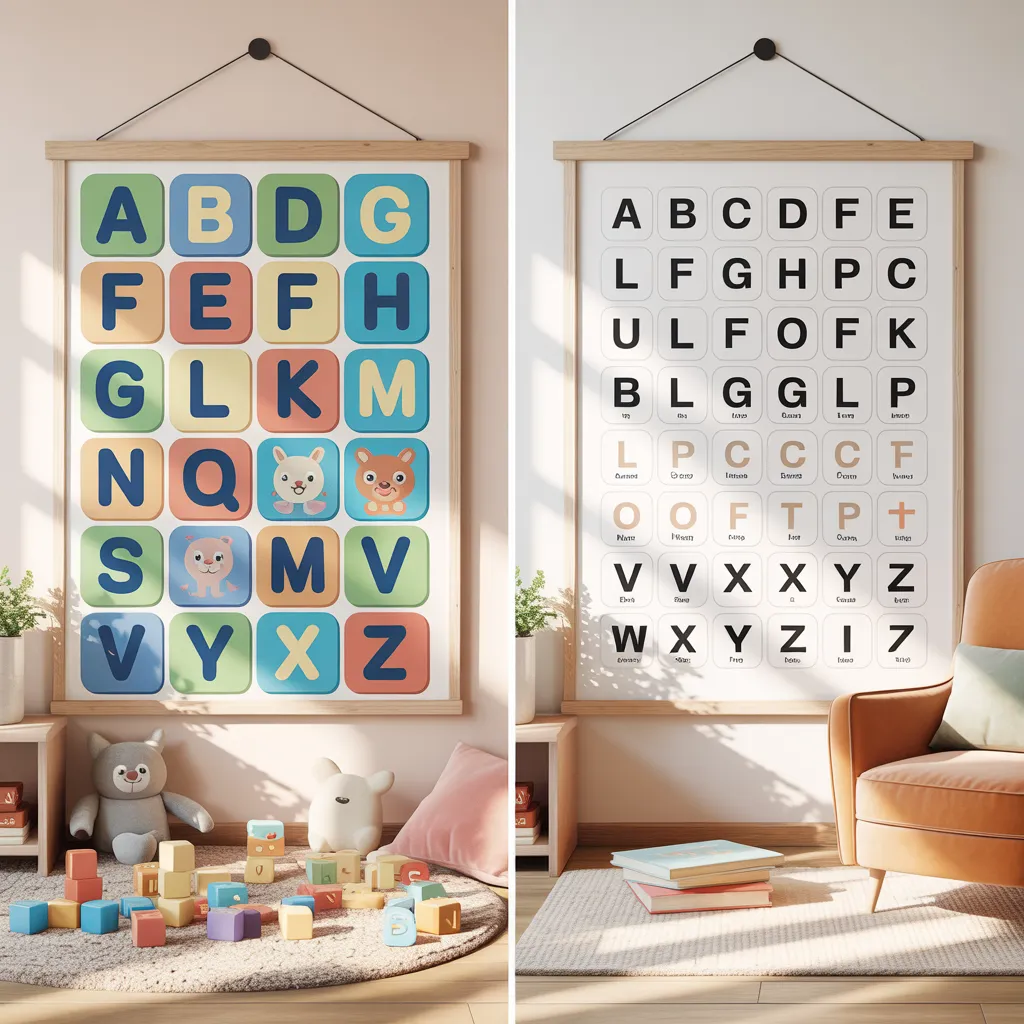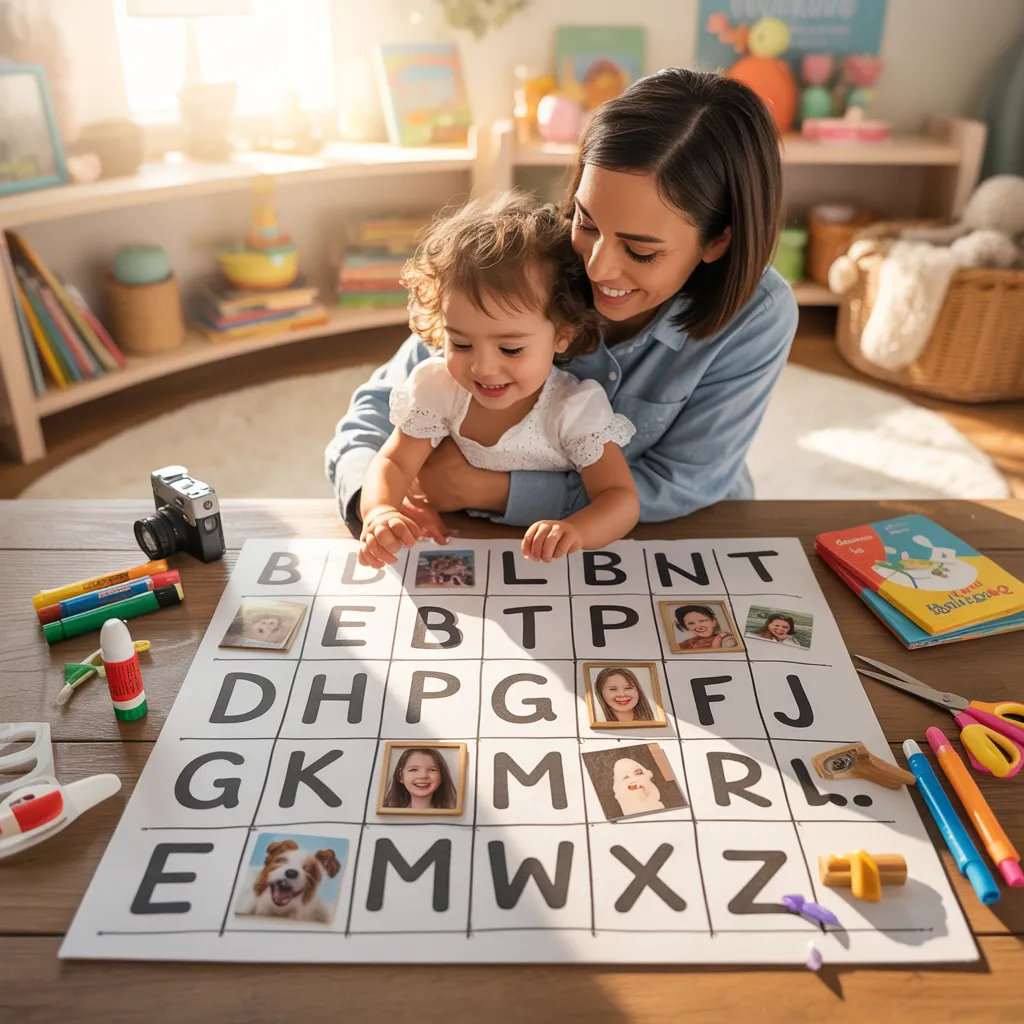The journey to literacy begins with a child’s first introduction to letters and their sounds. An alphabet learning chart serves as a powerful visual anchor in this process, creating a consistent reference point that children return to as they gradually master letter recognition, sounds, and early reading skills. Unlike flashcards or digital apps that provide momentary exposure, a well-designed alphabet learning chart creates a permanent presence in a learning environment, allowing for repeated, self-directed interactions that build confidence and familiarity over time. Whether displayed in a classroom, playroom, or bedroom, these educational tools combine visual appeal with structured information, making abstract letter concepts more concrete and accessible for young minds. As parents and educators seek effective resources to support early literacy, understanding how to select, use, and enhance alphabet charts can transform them from simple decorations into dynamic teaching tools that adapt to children’s changing needs throughout their developmental journey.

Key Elements of an Effective Alphabet Learning Chart
Not all alphabet charts deliver equal educational value. The most impactful alphabet learning chart designs incorporate specific features that enhance memorability and practical application.
Visual Design Principles That Enhance Retention
The visual organization of an alphabet learning chart significantly influences how effectively children absorb and recall information. Choose charts that present letters in a clean, uncluttered layout with adequate space between elements to prevent visual overwhelm. Consider color-coding that serves a learning purpose rather than mere decoration—perhaps grouping vowels in one color or using consistent colors for letters with similar sounds. Font selection matters tremendously; opt for clear, simple typefaces that closely resemble how children will learn to write letters, avoiding overly stylized or decorative fonts that might create confusion about standard letter formation. The most effective charts employ visual hierarchy techniques, making the most important information (the letters themselves) most prominent, with supporting elements (pictures, words, sound cues) clearly connected but secondary in visual weight.
Multisensory Components for Different Learning Styles
The most effective alphabet learning chart options engage multiple senses, accommodating diverse learning preferences. Consider tactile charts with raised or textured letters that invite finger tracing, reinforcing letter shapes through touch. Look for charts that incorporate movement prompts—perhaps simple gestures or actions associated with each letter sound, engaging kinesthetic learners. Audio-enhanced charts that pronounce letter sounds when pressed support auditory learning while reinforcing the crucial connection between visual symbols and their sounds. For visual learners, seek charts with consistent, clear illustrations that strongly represent the letter-sound relationship (like a clearly drawn apple for ‘A’ rather than abstract or ambiguous images). These multisensory elements transform passive viewing into active engagement, creating stronger neural pathways for letter recognition and recall.

Strategic Placement and Implementation of Alphabet Charts
Even the most brilliantly designed alphabet learning chart becomes ineffective if positioned or utilized incorrectly. Thoughtful implementation transforms a simple visual aid into an integrated learning tool.
Optimal Positioning for Maximum Engagement
The placement of an alphabet learning chart significantly impacts its usefulness and frequency of interaction. Position charts at children’s eye level rather than adult height, inviting independent reference without assistance. Consider creating multiple chart zones throughout your space—perhaps a primary reference chart in the main learning area, with smaller versions in reading corners, art stations, or writing centers. This approach normalizes alphabet interaction across different activities. For young children still developing visual tracking skills, horizontal arrangements often prove more accessible than vertical formats, allowing easier left-to-right scanning that mirrors reading direction. In classrooms, create a dedicated alphabet wall that expands beyond a simple chart to include changeable elements like featured letters, words starting with focus letters, or student-created alphabet art, creating a dynamic, evolving reference that grows with children’s understanding.
Incorporating Alphabet Charts Into Daily Routines
Rather than treating an alphabet learning chart as a passive reference tool, integrate it actively into daily activities and transitions. Begin morning gatherings by singing the alphabet song while pointing to each letter on the chart, creating a consistent routine that builds familiarity. During story time, reference the chart when encountering interesting words, helping children make connections between text and chart. Create simple games like « Letter of the Day, » featuring one chart letter in multiple activities throughout the day. When children ask how to spell words, model using the chart as a resource, demonstrating its practical application for independent learning. These consistent interactions transform a static display into a dynamic teaching tool that children naturally incorporate into their learning processes.
Differentiated Approaches for Various Developmental Stages
A truly effective alphabet learning chart strategy evolves as children progress through different stages of literacy development.
Preschool-Friendly Alphabet Chart Features
For the youngest learners (ages 2-4), alphabet chart simplicity is key. Choose designs that focus primarily on uppercase letters, which typically have more distinctive shapes that are easier for young eyes to differentiate. Include clear, representative pictures that strongly connect to the beginning sound (ball for B, cat for C) without cluttering the visual field. Consider oversized charts with fewer elements per page—perhaps displaying letters in groups of 4-6 rather than the entire alphabet at once, preventing overwhelm. Interactive elements like lift-the-flap features, attachable/detachable pieces, or accompanying manipulatives maintain engagement through hands-on exploration. At this stage, the goal isn’t mastery but rather building familiarity and positive associations with letters as interesting symbols worthy of attention and exploration.
Progressive Alphabet Charts for Developing Readers
As children develop greater letter familiarity (typically ages 4-6), their alphabet learning chart needs evolve to support emerging reading skills. Introduce charts that include both uppercase and lowercase forms, helping children recognize the connection between corresponding letters. Add phonetic elements that highlight letter-sound relationships, perhaps including multiple pictures representing different words that begin with each letter sound. Consider charts that introduce simple word families or blends once basic letter recognition is established. Color-coding can shift to highlight phonetic patterns rather than individual letters. Interactive elements might include movable word-building components or sections where children can add their own examples of words beginning with each letter, creating ownership of their learning process. This progressive approach ensures that alphabet charts remain relevant and challenging as literacy skills develop.
DIY Alphabet Chart Creation and Customization

While commercial options abound, creating customized alphabet learning chart materials offers unique advantages in relevance and engagement.
Personalized Alphabet Charts That Increase Relevance
Standard charts become exponentially more meaningful when personalized to reflect a child’s specific interests and experiences. Create a custom alphabet learning chart featuring family photos demonstrating each letter sound—A for Auntie Anne, B for baby brother, C for cousin Carlos—creating immediate emotional connection and relevance. For children with specific passions, develop themed charts around their interests—a dinosaur enthusiast might have Ankylosaurus for A, Brachiosaurus for B, creating high-interest reference points. For multilingual families, design charts that bridge languages, perhaps showing equivalent letters and sounds across different alphabets, supporting dual language development. These personalized approaches transform generic learning tools into deeply meaningful resources that acknowledge and celebrate children’s unique identities and experiences.
Expandable Alphabet Systems That Grow With Children
Rather than viewing an alphabet learning chart as a static, unchangeable tool, consider creating modular systems that evolve alongside developing skills. Start with a basic letter recognition chart, then add overlays or adjacent resources that introduce more advanced concepts like digraphs (sh, ch, th) or vowel variations. Design pocket charts where picture cards can be exchanged to maintain freshness and introduce new vocabulary. Create coordinating materials like alphabet books, letter-specific activity cards, or related games that extend learning beyond the chart itself. This expandable approach maintains engagement through novelty while gradually building complexity, allowing the same foundational system to remain relevant from early letter recognition through beginning reading stages.
Conclusion: Maximizing the Impact of Alphabet Learning Charts
An alphabet learning chart represents much more than a decorative educational poster—when thoughtfully selected and implemented, it becomes a powerful centerpiece in a child’s literacy journey. By choosing charts with strong visual design, incorporating multisensory elements, positioning them strategically, and adapting them to developmental stages, parents and educators transform these simple tools into dynamic resources that support children’s evolving needs and abilities. Remember that the most effective approach combines consistent exposure with active engagement, creating regular opportunities for children to interact with alphabet information in meaningful, playful ways.
As you implement alphabet charts in your home or classroom, maintain a balance between structure and joy. While letter learning follows certain developmental patterns, it should unfold within a context of curiosity and discovery rather than pressure or performance. Notice which elements of your alphabet resources spark particular interest, and build upon these natural motivations to deepen engagement. By approaching alphabet learning as an ongoing adventure rather than a checklist of skills to master, you’ll nurture not just letter knowledge but a foundational love of language that supports lifelong literacy.
12 Powerful Alphabet Flashcards Printable Sets to Revolutionize Early Learning
FAQ About Alphabet Learning Charts
At what age should I introduce an alphabet learning chart?
Most children show readiness for simple exposure to alphabet learning chart materials between 18 months and 2 years, though this varies significantly based on individual development. At this early stage, focus on casual exposure rather than formal instruction—sing the alphabet song while pointing to letters, occasionally mention letter names during related activities, or identify letters in your child’s name. Look for interest signals like pointing to letters, asking what signs say, or noticing letters in the environment. If a child shows little interest, continue informal exposure without pressure, trusting that readiness will develop naturally. Remember that initial introduction aims to build familiarity and positive associations rather than mastery, creating a foundation for more focused learning when developmental readiness emerges.
Should alphabet charts present letters in alphabetical order or grouped by other patterns?
While traditional alphabet learning chart designs present letters in standard alphabetical sequence, research suggests that various organizational approaches offer distinct benefits for different learning stages and purposes. Alphabetical order provides the advantage of consistency with the familiar alphabet song and conventional reference materials, building a foundational framework that children will use throughout life. However, alternative groupings can support specific learning goals—grouping visually similar letters (like b/d/p/q) helps children notice distinctive features that prevent confusion; arranging letters by sound patterns highlights phonetic relationships; clustering commonly used letters together prioritizes high-utility symbols that appear frequently in beginning words. Consider using a standard alphabetical chart as your primary reference while incorporating supplementary resources that explore alternative groupings for specific learning purposes.
How can I help a child who seems overwhelmed by a complete alphabet learning chart?
For children who demonstrate overwhelm when faced with all 26 letters simultaneously, several modifications can create more manageable learning experiences. Try covering portions of a complete alphabet learning chart, revealing just 3-5 letters at a time, gradually uncovering more as familiarity grows. Create personalized mini-charts focusing on meaningful letter subsets—perhaps just the letters in the child’s name as a starting point, adding other high-interest letters gradually. Consider three-dimensional approaches like alphabet blocks or magnetic letters that allow physical interaction with just a few letters at once rather than visual exposure to the entire set. Remember that alphabet learning unfolds over months and years rather than days or weeks; breaking the process into smaller, confidence-building steps supports positive associations with letters while preventing the frustration that can accompany cognitive overwhelm.
How do I help children transition from letter recognition to actual reading using alphabet charts?
As children develop solid letter recognition skills, alphabet learning chart usage can evolve to support the bridge to reading through several intentional strategies. Introduce letter-sound activities using the chart as reference—play « I Spy » games finding objects in the room that start with specific letter sounds identified on the chart. Create word-building activities where children use individual letter cards to form simple words, checking the chart for assistance. Develop matching activities connecting simple three-letter words to their beginning letters on the chart. Add word families to your chart display (like -at words: cat, hat, rat) to introduce patterns that support early decoding. Throughout this transition, maintain a balance between structured guidance and playful exploration, remembering that confidence and positive association with text remain as important as technical skill development in nurturing successful readers.

Ping : Best Apps for Alphabet Learning: 15 Powerful Tools for Early Literacy - smartkidsprintable